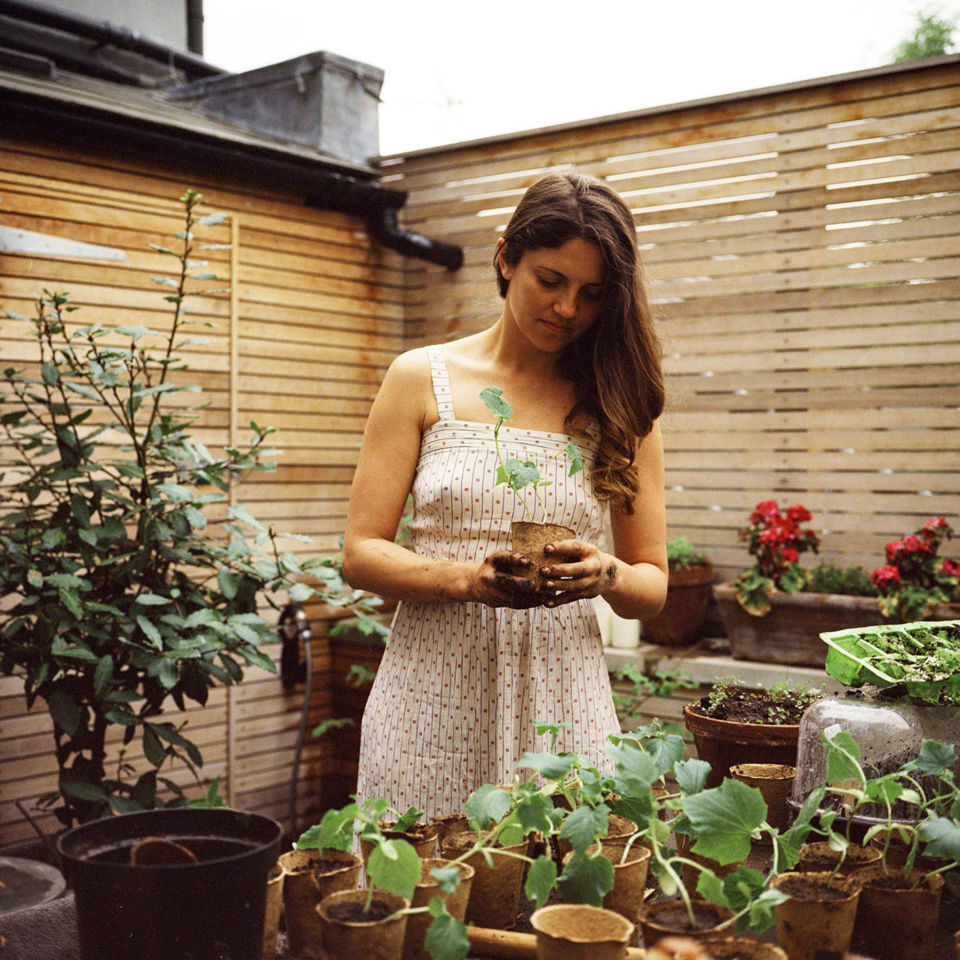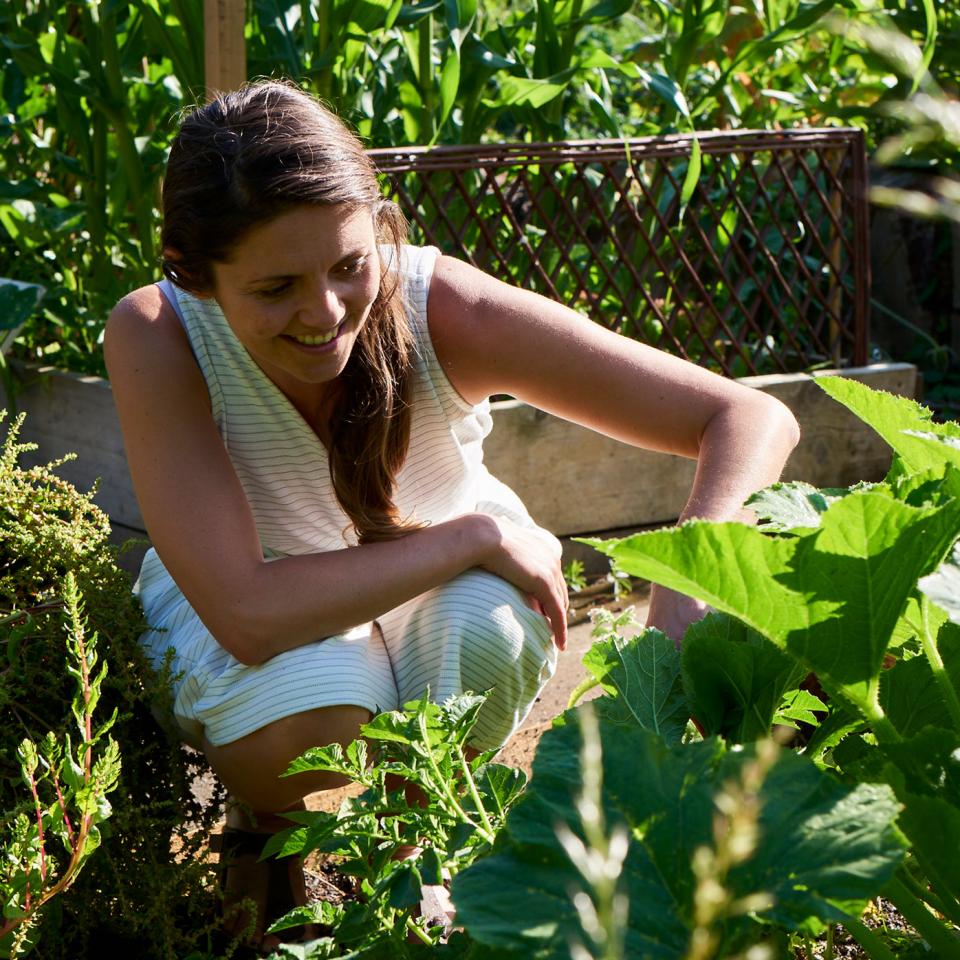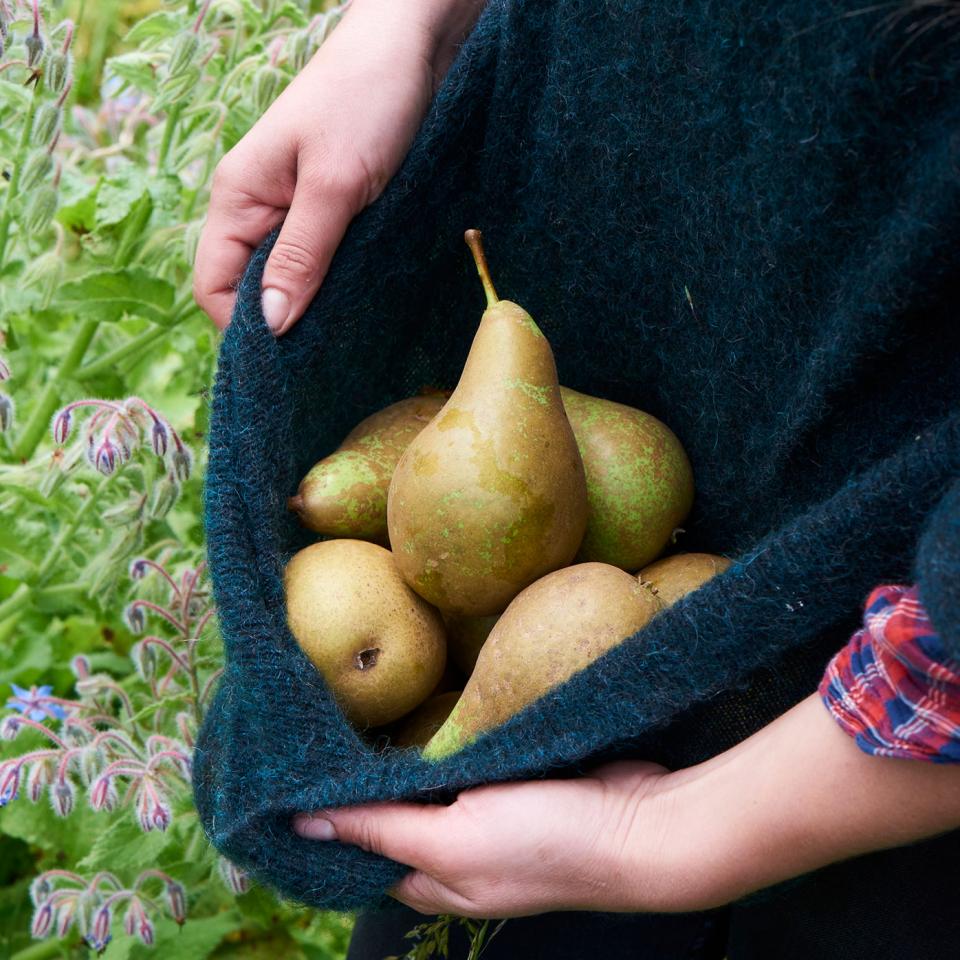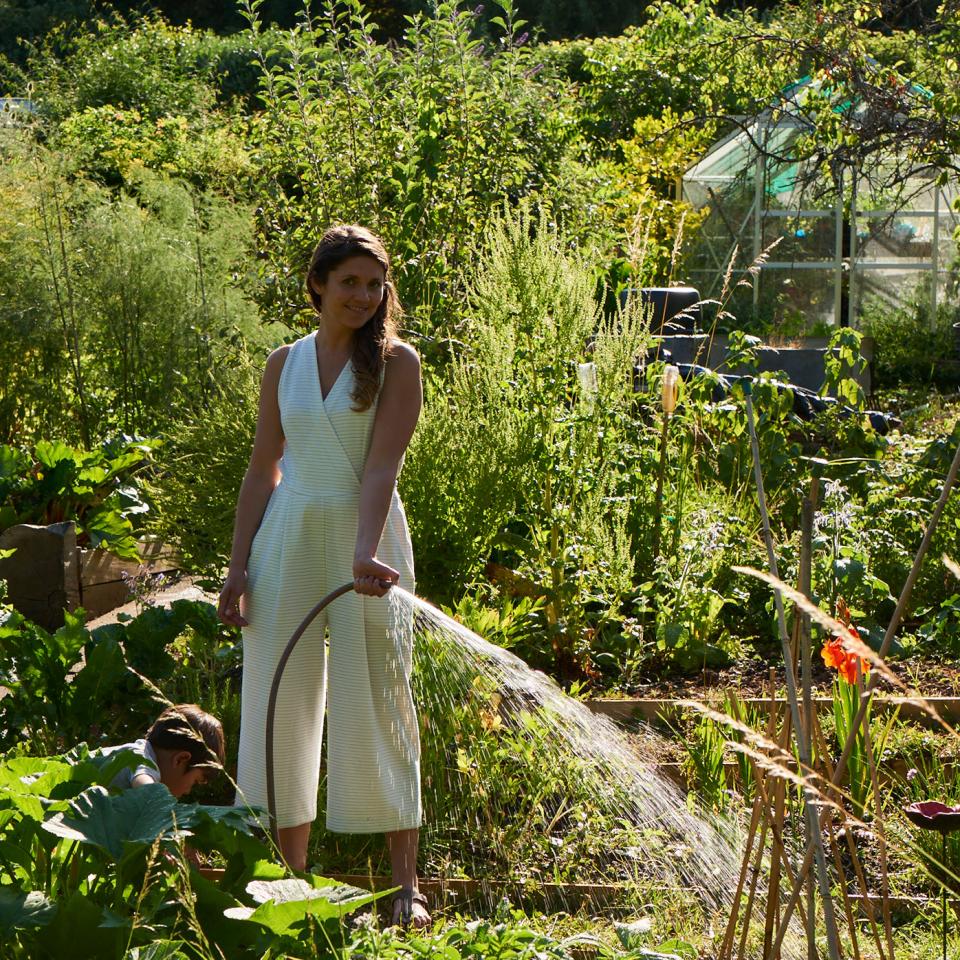Food
Rich pickings: Olia Hercules shares her allotment diary
by Olia Hercules
When Ukrainian-born chef Olia Hercules vowed to grow the flavours of home on her new allotment, she enlisted the help of strangers to achieve her dream.

I first wrote to Haringey Council, asking for an allotment, in 2006. Ten years later, in November 2016, I’m finally at the top of the waiting list! They have found me a plot and I must make an appointment to see it. However, there are two problems – the first is we have just moved to East London, which means the Alexandra Palace allotments are now an hour away by public transport. The second is that when I visit the plot, it’s a mess. Way too out of control for a beginner like me. I ask the allotment secretary to keep me on the list until something else comes up – and in February, it does.
February - the plot begins
Plot 10B is earmarked for me and I go to see it. I had been advised by friends to look for a plot with not too much shade, and this one fits the bill. There is a lot of work to do – but that feels positive, like getting an old house that you can make your own. I’ve realised I know nothing about making things grow, so I post on Instagram asking for help, and it turns out to be the most amazing research tool. Loads of seasoned allotment holders contact me saying the first job is to sort out the soil, so I begin an exhaustive search for manure. I contact farms for organic manure and eventually find some well-fermented, organic sheep, pig and cow manure from Wales. While we wait for it to arrive, we prepare the soil. The allotments are over abandoned railway tracks, so we keep on finding huge pieces of iron in the ground. There are also a lot of old carpets to chuck away – it’s not until later that I find out they are meant to be there! Apparently, carpets are a great way of warming up the earth in preparation for planting.

March - digging for victory
The manure arrives! My mum is staying with us, so my partner Joe, Mum, my five-year-old son Sasha and I all head to the allotment to dig it in. After hours of backbreaking work, it’s finally done. Now the ground is prepped, I can’t wait to grow things I love from Ukraine – sorrel, blackcurrants, strawberries, horseradish, squashes, chard, beetroot, lettuce and ginger-scented rosemary. I go online and order seeds for the lot.
April - memories of home
Our lovely allotment neighbour, Dick, visits our plot while we’re not there and plants three big chard plants and two huge rhubarbs. That starts us off; the weather is warming up and we can get going. Sasha adores the allotment and we give him seeds to scatter everywhere; we also give him a bit of the plot as his own. Back at home, I reflect on the day. I want the allotment to provide me with a bit of my home, a slice of my childhood. I want Sasha to experience the things I experienced when I was little; wild strawberries, Morello cherry trees, gooseberries and mulberry bushes. I admit to myself that, although I want the allotment to grow loads of fresh produce, deep down it’s really for Sasha.

June - putting down roots
A three-week trip to Ukraine for work is fast approaching. Will the allotment survive without us? Mum has brought some cucumber and pattypan squash seeds with her and, with Sasha’s help, we plant them in trays indoors. The day before we leave for Ukraine, Joe and I head to the allotment and get them into the ground. We also scatter seeds – sorrel, borage, nasturtiums and purslane – following advice to plant everywhere so the weeds can’t get through. Hoping for the best, we go home to pack.
July - our first harvest
The trip is over and, feeling anxious, we go straight to the allotment. I’m terrified that snails will have eaten everything – but when I dare to open my eyes, I can’t believe it. The plot is a jungle, with huge borage, horseradish, and bushes groaning with gooseberries, blackcurrants and redcurrants. It’s wild, but beautiful. We pick the biggest squash, and loads of herbs, before heading home to make potato and squash stew. It’s delicious. We come to the allotment every weekend in July, tending the plants, picking produce and just hanging out, happy in the wilderness. But August is looming and that means our big summer holiday – will the plants make it?
August - into the wilderness...
We return from our holiday to a scary letter from the council saying that unless we tidy up the plot, they will take it away. We are shocked and hurry down there; when we arrive, I can see they have a point. Any sense of a charming wilderness has gone and it’s completely out of control. They have given us a month to sort it out. This couldn’t have come at a worse time – my second book has just come out and life is ridiculously busy.

September - D-day dawns
I head to the allotment the day before the deadline and spend seven hours tidying up, weeding and cutting back the grass. Five hours in and the pile of clippings is taller than me. I put woodchip on the ground so the weeds don’t grow. I walk up and down with the wheelbarrow, feeling the sun on my face, rescuing my plot. Despite the hard work, it’s one of the most enjoyable days I’ve spent there. I am determined to save this little piece of land that we’ve put so much work and love into. I must have satisfied the council, as I haven’t heard from them since.
Olia's tips for first-time growers
1. It’s a good idea to get some organic, well-fermented manure to enrich the soil. Give yourself enough time; digging it in is laborious.
2. Grow plants from seed in trays at home, then plant out in May, when the weather is warmer.
3. Plant your plot densely, especially if you can’t spend a lot of time at the allotment; weeds won’t get the chance to multiply.
4. Choose plants that grow easily so you stay motivated! Chard, rhubarb, herbs, lovage and squash proved to be no-hassle for me.
5. Plant edible flowers. I chose borage and nasturtiums, which are good for bees, and are beautiful and tasty in salads or as garnish.
6. If you have space, create hideaways for wildlife. Wooden logs and weed and leaf litter can turn into attractive sanctuaries for hedgehogs (and they might help you with the slugs, too).
7. Do not use slug pellets – they can poison hedgehogs and birds. Dishes of beer can work by attracting slugs, but the most effective way to get rid of them is by picking them up in the evenings.
8. Talk to experienced allotment folk, either your neighbours or online. People are kind and keen to help.
9. Be mindful of your allotment neighbours. Always leave your shared path clean; invest in a garden broom.
10. Keep the council happy. Your allotment should be tidy, with weeds under control.
Don't miss Olia's latest recipes using fresh grow-your-own produce:
Radish, spring onion and watercress salad with baked trout












